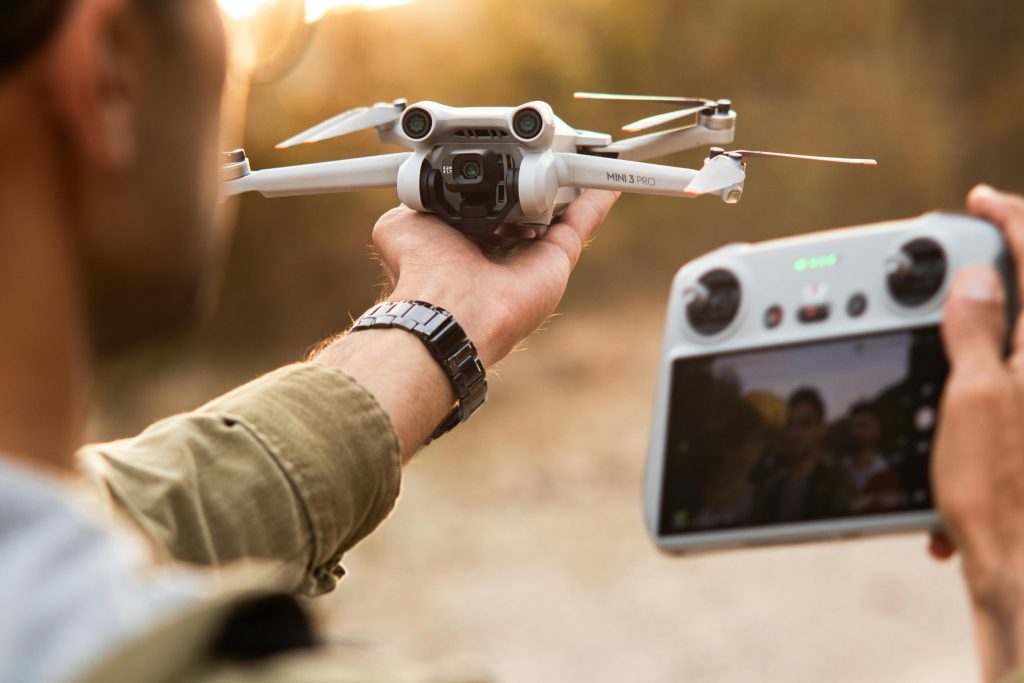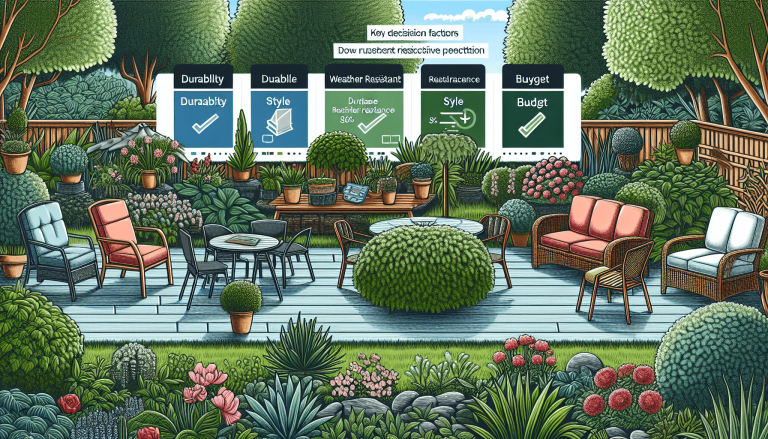Are you tired of pests wreaking havoc in your beloved garden? If so, fret not, because in this article, we will explore a range of effective methods for pest control in gardens. From natural remedies to mechanical deterrents, we’ve got you covered with practical tips to keep those pesky critters at bay. Say goodbye to the frustration of destroyed plants and hello to a flourishing oasis right in your backyard. So grab your gardening gloves and get ready to reclaim your garden from unwanted intruders.
Table of Contents
ToggleBiological Methods
Introduction to biological methods
Biological methods for pest control in gardens involve utilizing natural organisms to manage pest populations. These methods focus on the use of beneficial insects and natural predators to maintain a healthy balance in the garden ecosystem. Unlike chemical methods, biological pest control is environmentally friendly and sustainable.
Introduction of beneficial insects
One effective biological method is the introduction of beneficial insects into the garden. These insects prey on harmful pests, helping to control their populations naturally. Ladybugs, lacewings, and hoverflies are examples of beneficial insects that feed on aphids, mites, and other common garden pests. By attracting and releasing these insects into the garden, you can significantly reduce the need for chemical insecticides.
Use of natural predators
In addition to beneficial insects, encouraging natural predators can be an effective biological control method. Birds, frogs, toads, and spiders are natural predators that feed on garden pests. Creating a garden ecosystem that provides habitat and food sources for these predators can help naturally regulate pest populations. For example, installing birdhouses, water features, and native plants can attract birds and other beneficial wildlife.
Encouraging biodiversity in the garden
Promoting biodiversity in the garden is another important aspect of biological pest control. By planting a variety of different plants, you attract a wide range of beneficial insects and wildlife, which helps maintain a healthy ecosystem. Biodiversity provides natural checks and balances against pest outbreaks, as certain plants can repel pests or attract beneficial insects. Additionally, diverse plantings can confuse and discourage pests from targeting specific crops, reducing the likelihood of severe infestations.
Cultural Methods
Introduction to cultural methods
Cultural methods involve the adoption of specific practices and techniques to manage pests in the garden. These methods focus on modifying the way plants are grown, maintained, and arranged to create an environment that is less conducive to pest infestations. By implementing cultural methods, you can reduce the reliance on chemicals and promote a more sustainable approach to pest control.
Crop rotation
Crop rotation is a cultural method that involves alternating the types of crops grown in specific areas of the garden from season to season. This practice helps disrupt pest life cycles and reduces the buildup of pests that are specific to certain crops. By rotating crops, you decrease the likelihood of pests becoming established and effectively control their populations.
Companion planting
Companion planting is another cultural method that involves growing certain plants together to deter pests or attract beneficial insects. For example, planting marigolds alongside tomatoes can repel pests like aphids, while planting herbs like basil or dill near cabbage plants can attract beneficial insects that prey on cabbage worms. Combining compatible plant species in the garden can create a natural pest control system.
Proper sanitation
Maintaining proper sanitation practices in the garden is crucial for preventing pest infestations. Removing fallen leaves, weeds, and decaying plant material helps eliminate potential hiding places and breeding grounds for pests. Additionally, regularly cleaning and disinfecting garden tools and equipment can prevent the spread of diseases and pests between plants.
Mulching
Mulching is a cultural practice that involves covering the soil around plants with a layer of organic materials, such as straw, leaves, or wood chips. Mulching helps conserve moisture and suppress weeds, but it also acts as a barrier that deters pests from reaching vulnerable plant roots. Additionally, certain organic mulches, like cedar chips or pine needles, can repel pests due to their natural aromatic properties.
Providing optimal growing conditions
Creating optimal growing conditions for plants is an essential cultural method for pest control. Healthy, vigorous plants are less susceptible to pest damage. Ensuring that plants receive proper sunlight, water, and nutrients helps strengthen their natural defenses and improve overall plant health. By giving plants the right conditions to thrive, you can minimize the likelihood of pest infestations.
Physical Methods
Introduction to physical methods
Physical methods of pest control involve using physical barriers and techniques to keep pests out of the garden or physically remove them once detected. These methods are often simple, cost-effective, and environmentally friendly, making them popular choices for gardeners looking to avoid chemical interventions.
Handpicking
Handpicking is a straightforward and effective physical method of pest control. It involves manually inspecting plants and picking off pests by hand. Large pests, such as caterpillars or slugs, can be easily removed and disposed of. Regularly inspecting plants helps detect pest problems early before they escalate into full-blown infestations. Remember to wear gloves when handpicking to protect yourself from potentially harmful insects or plants.
Traps and barriers
Traps and barriers are physical devices used to capture or deter pests. Sticky traps can be hung in the garden to catch flying insects like whiteflies or aphids. Beer traps can be used to attract and drown slugs or snails. Additionally, physical barriers like row covers or netting can be installed to block pests from reaching plants. These barriers can prevent pests from laying eggs or directly feeding on crops.
Mulching
Mulching, mentioned earlier as a cultural method, can also act as a physical barrier against certain pests. By creating a layer of mulch around plants, you can make it difficult for crawling insects or pests to reach the soil or plants. This physical barrier inhibits the movement of pests and reduces the risk of infestations.
Netting
Netting is a physical method commonly used to protect plants from birds or larger pests. Bird netting can be draped over fruit trees or berry bushes to prevent birds from reaching and damaging the fruits. Using netting with small mesh sizes can also keep out insects like butterflies or moths that may lay their eggs on plants. Properly securing the netting is crucial to ensure it effectively covers the plants and prevents access to pests.
Use of reflective surfaces
Reflective surfaces, such as aluminum foil or reflective mulch, can be strategically placed in the garden to deter pests. The reflective surfaces create flashes of light that confuse and frighten pests, causing them to avoid the area. This method is particularly effective against insects like aphids or whiteflies. Reflective surfaces can be hung from stakes or placed on the ground near vulnerable plants.
Chemical Methods
Introduction to chemical methods
Chemical methods of pest control involve the use of chemicals, such as insecticides and herbicides, to eliminate or suppress pest populations. While chemical methods can be effective, it is important to use them carefully and responsibly, as they can have negative impacts on the environment and beneficial organisms.
Insecticides
Insecticides are chemicals specifically formulated to control or kill insects. They come in various forms, including sprays, dusts, and granules. Insecticides can be broad-spectrum, targeting a wide range of pests, or narrow-spectrum, designed to control specific pests. It is crucial to carefully read and follow the instructions on the insecticide product label to ensure safe and effective use.
Herbicides
Herbicides are chemicals used to kill or suppress unwanted plants, commonly known as weeds. They can be selective, targeting specific types of plants, or non-selective, affecting a wide range of plants. Herbicides can be applied as sprays or granules, and it is important to follow the instructions on the product label to avoid damaging desired plants or causing environmental harm.
Use of chemical baits
Chemical baits are an effective method for attracting and eliminating pests. They contain a toxic substance mixed with an attractive food source, which lures pests to consume the bait. Once ingested, the toxin kills the pest. Chemical baits are commonly used for controlling rodents, ants, and snails. It is essential to place the baits in areas inaccessible to children, pets, or other non-target animals.
Organic Options
Introduction to organic options
Organic options for pest control in gardens involve using natural substances and methods to combat pests while minimizing harm to the environment. These options are generally considered safer alternatives to chemical pesticides, as they do not contain synthetic or harmful substances. Organic pest control methods focus on prevention, cultural practices, and the use of natural products.
Neem oil
Neem oil is derived from the neem tree and is effective against a wide range of pests, including aphids, caterpillars, and mites. It acts as an insect growth regulator, disrupting the pest’s life cycle and inhibiting their feeding behavior. Neem oil can be sprayed on plants to repel pests or suffocate them. It is important to follow the instructions on the product label and avoid spraying during hot or sunny periods.
Pyrethrum
Pyrethrum is a natural insecticide derived from certain varieties of chrysanthemum flowers. It is highly effective against flying insects, such as mosquitoes, flies, and moths. Pyrethrum products can be sprayed directly on pests or applied as foggers or insecticidal dusts. It’s important to note that while pyrethrum is considered organic, it can still harm beneficial insects, so use it responsibly and selectively.
Diatomaceous earth
Diatomaceous earth is a powdery substance made from the fossilized remains of tiny marine organisms called diatoms. It works by physically damaging the exoskeleton of insects, causing dehydration and death. Diatomaceous earth can be sprinkled around plants or directly applied to pests. It is most effective against crawling insects like ants, fleas, and beetles. Use food-grade diatomaceous earth for garden applications.
Boric acid
Boric acid is a naturally occurring compound that can be used to control pests like ants, cockroaches, and silverfish. It acts as a stomach poison, causing pests to die upon ingestion. Boric acid can be mixed with bait or applied as a powder around infested areas. It is important to use boric acid cautiously, as it can be toxic to humans and pets if ingested in large quantities.
Integrated Pest Management
Introduction to Integrated Pest Management
Integrated Pest Management (IPM) is a comprehensive approach that combines various pest control strategies to effectively manage pests while minimizing risks and impacts to human and environmental health. IPM focuses on long-term solutions by integrating cultural, biological, mechanical, and chemical methods in a coordinated and sustainable manner.
Principles of IPM
The principles of IPM include pest identification, setting action thresholds, prevention, monitoring, and evaluation. Before implementing any pest control measures, it is crucial to accurately identify the pest and understand its life cycle and habits. Action thresholds are predetermined pest population levels at which control measures are justified. IPM emphasizes prevention by implementing practices that minimize opportunities for pests to infest.
Implementing IPM strategy
To implement an IPM strategy, several steps need to be taken. Start by assessing the pest situation and setting action thresholds. Next, employ preventive measures such as proper sanitation, cultural practices, and plant selection. Regular monitoring and scouting for pests will help identify and detect infestations early. Once action thresholds are reached, select the most appropriate pest control methods, considering cultural, biological, and mechanical options before using chemical interventions.
Monitoring and identification of pests
Monitoring and identifying pests play a crucial role in IPM. Regularly inspect plants and surrounding areas for signs of pest damage or presence. By accurately identifying the pest, you can select the most effective control methods. Monitoring can involve the use of traps, visual inspections, or the help of pest identification guides or experts.
Threshold determination and action
Action thresholds in IPM indicate the pest population levels at which control measures need to be taken. By determining these thresholds, you avoid unnecessary or premature interventions. Thresholds can be based on the number of pests, the level of damage observed, or the economic impact of pest damage. Taking action only when necessary helps maintain a balance between pest control and minimizing harm to beneficial organisms.
Evaluation and adjustment of IPM
Evaluating and adjusting the IPM strategy is an ongoing process. Regularly assess the effectiveness of the pest control methods employed and their impact on the garden ecosystem. If the current approach is not achieving the desired results, adjustments can be made by incorporating alternative methods or fine-tuning existing practices. Continuous evaluation and improvement ensure the long-term success of the IPM strategy.
Natural Repellents
Introduction to natural repellents
Natural repellents are substances or techniques used to deter pests from the garden without causing harm to plants, animals, or the environment. They rely on the use of natural compounds or odors that pests find unpleasant or unattractive. Natural repellents offer an eco-friendly alternative to chemical pesticides and can be used to protect specific plants, areas, or the entire garden.
Garlic
Garlic has been used as a natural pest repellent for centuries. Its strong odor repels a variety of pests, including aphids, slugs, and certain insects. To use garlic as a natural repellent, mix crushed garlic cloves with water and spray the solution on plants. The garlic spray acts as a deterrent without causing harm to plants or the environment. Reapply the garlic spray after rainfall or as needed.
Peppermint oil
Peppermint oil is another effective natural repellent that deters pests through its strong scent. Many pests, including spiders, ants, and rodents, find the aroma of peppermint oil unpleasant. Dilute peppermint oil with water and spray it around entry points, plants, or areas of infestation to create a barrier that pests are reluctant to cross. Refresh the spray regularly to maintain its effectiveness.
Cayenne pepper
Cayenne pepper or red chili powder can be used as a natural deterrent for pests. The strong, spicy odor repels many insects, including ants, caterpillars, and aphids. To use cayenne pepper as a natural repellent, mix it with water and a few drops of liquid dish soap. Spray the solution on plants or directly apply it to affected areas. Consider wearing gloves and avoiding contact with eyes or sensitive areas when handling cayenne pepper.
Essential oils
Certain essential oils, such as lavender, rosemary, or citronella, have natural insect-repellent properties. Dilute a few drops of your chosen essential oil in water and spray it around plants or infested areas to ward off pests. You can also soak cotton balls in essential oils and place them strategically around the garden to create a barrier or deter certain pests. Essential oils are safe and provide a pleasant fragrance in the garden.
Mechanical Solutions
Introduction to mechanical solutions
Mechanical solutions for pest control involve the use of tools, devices, or systems to physically remove or repel pests. These methods are non-toxic and environmentally friendly, making them suitable for organic gardening. Mechanical solutions work by creating physical barriers or using mechanical force to control and manage pests effectively.
Use of sprinkler systems
Sprinkler systems can serve as a mechanical solution to control certain pests. Sprinklers set on timers can deter pests that dislike moisture or are susceptible to fungal diseases. For instance, slugs and snails are attracted to moist areas, so directing water spray toward them or their hiding spots can discourage their presence. Avoid regular overhead watering if it promotes disease spread.
Water jets
Water jets are an effective mechanical solution for deterring pests, particularly larger animals like deer or rabbits. Motion-activated water jets can be set up to detect the presence of these pests and spray a sudden, forceful stream of water, startling them and causing them to flee. Water jets can help protect plants and reduce damage caused by browsing animals.
High-pressure hoses
A high-pressure hose can be used as a mechanical solution to remove pests, particularly insects like aphids or mites. By directing a strong stream of water at infested plants, you can dislodge and wash away pests. It is important to adjust the water pressure to avoid damaging delicate plants. Regularly inspect plants to identify infestations and apply the high-pressure hose as necessary.
Biotechnological Solutions
Introduction to biotechnological solutions
Biotechnological solutions involve the application of scientific knowledge and techniques to control pests in a targeted and environmentally friendly manner. These solutions utilize advances in genetics, molecular biology, and biochemistry to develop tools and products that offer effective and sustainable pest control options.
Genetic modification
Genetic modification, or genetic engineering, is a biotechnological solution used to enhance the resistance or tolerance of plants to pests. By introducing specific genes into plants, scientists can create crops that produce toxins harmful to pests or have improved defense mechanisms. Genetic modification has been used to develop pest-resistant crops like Bt corn, which produces a protein toxic to certain insect pests.
Use of biopesticides
Biopesticides are biologically derived substances or microorganisms used to control pests. These natural agents include bacteria, fungi, viruses, or their products, which act as biological control agents. Biopesticides can be selective, targeting specific pests, or broad-spectrum, affecting a range of pests. They are often safer to humans and the environment than chemical pesticides and can be an effective biotechnological solution for pest control.
RNA interference
RNA interference (RNAi) is a biotechnological technique used to disrupt the gene expression of pests. It involves introducing small RNA molecules that target specific genes into pests, leading to the suppression of essential proteins and disrupting their normal functioning. RNAi has shown promise in controlling pests such as insects, nematodes, and viruses, providing targeted and environmentally friendly pest control options.
Seasonal Considerations
Introduction to seasonal considerations
Pest control needs vary throughout the year due to changes in pest populations, life cycles, and environmental conditions. Considering seasonal factors when implementing pest control measures can improve their effectiveness and reduce the reliance on chemical interventions.
Spring pest control
In spring, pest activity typically increases as temperatures rise and plants start to grow vigorously. Common pests during this season include aphids, caterpillars, slugs, and snails. Implement preventive measures, such as cleaning up garden debris, to remove potential pest habitats. Monitor plants regularly for signs of infestation and intervene early. Cultural practices like crop rotation and planting pest-resistant varieties are essential in spring.
Summer pest control
Summer is a peak time for pest activity in the garden, as warm temperatures and abundant foliage provide favorable conditions for pests to thrive. Common pests during this season include mosquitoes, flies, aphids, and beetles. Regularly inspect plants for signs of damage or infestation and take immediate action. Water plants deeply and avoid overwatering to discourage pest-related issues. Consider using physical methods like netting or traps to protect vulnerable plants.
Fall pest control
Fall marks the transition from active growth to dormancy for many plants, and pest activity begins to decline. However, certain pests, such as rodents and spiders, may seek shelter in and around garden areas during this season. Remove fallen leaves and debris that can provide hiding places for pests. Inspect structures, fences, and entrances to the garden to identify and seal potential entry points for pests.
Winter pest control
Winter is a relatively dormant period for pests in many regions, as cold temperatures limit their activity. However, certain pests, such as overwintering insects or rodents seeking warmth, can still pose problems. Consider implementing physical barriers, such as frost covers or row covers, to protect susceptible plants from extreme cold or hungry wildlife. Inspect storage areas for potential pest hiding spots and ensure they are secure.
By combining the various methods discussed, considering seasonal factors, and adopting a holistic and proactive approach to pest control, you can effectively manage pests in your garden while promoting a healthy and sustainable environment.









